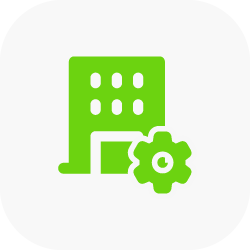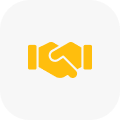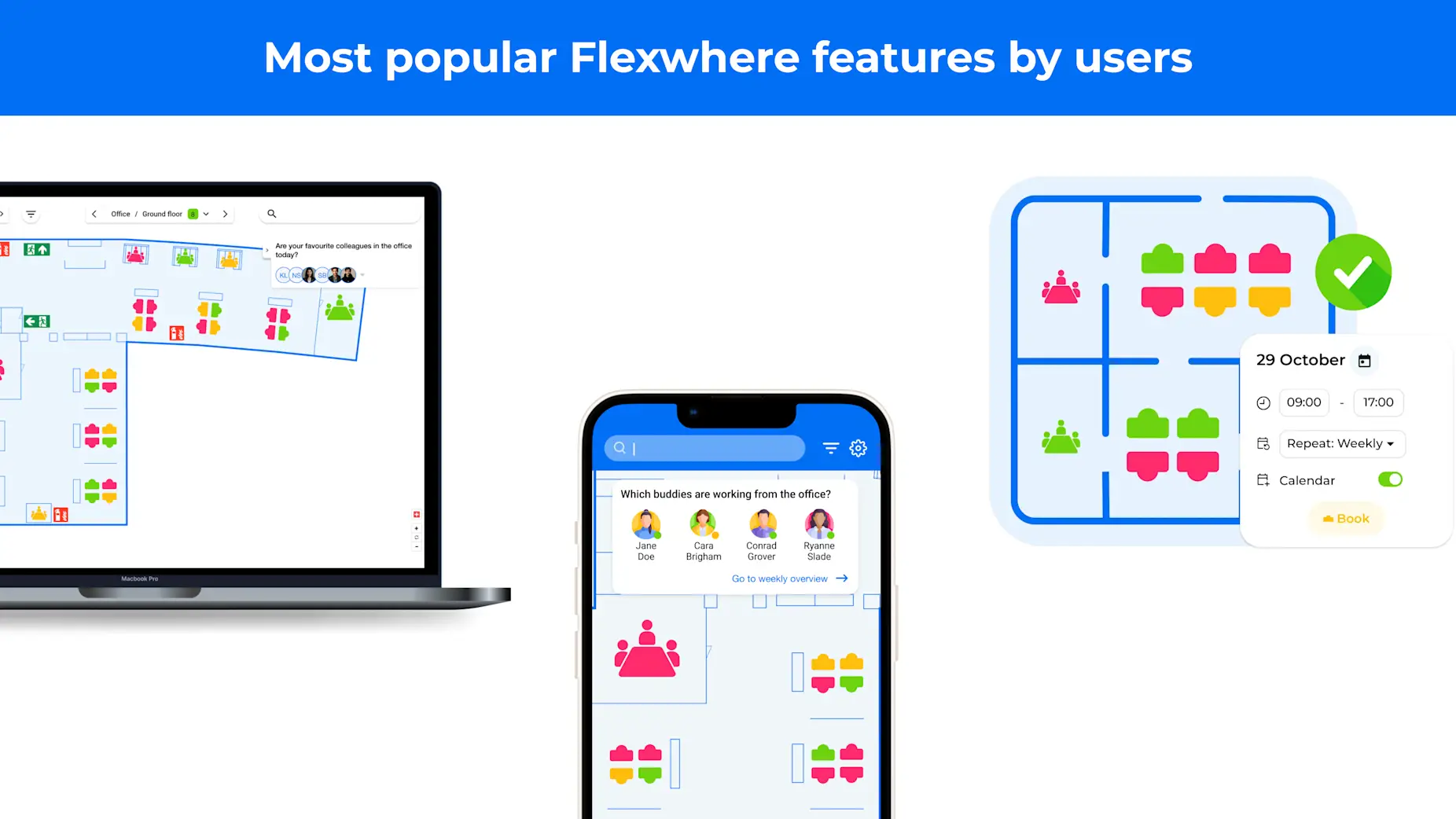%20(1).png)
Beyond the Exit Interview: Your Tech Stack Is Your New Retention Tool
As an HR or C-Suite leader, you know the pain of voluntary turnover. But to make the business case for new solutions, we must be blunt about the real-world cost.
The data is staggering. Research from Gallup shows that the cost to replace a single employee is not just a recruiter's fee—it's a black hole of lost productivity, institutional knowledge, and team morale. The total cost is estimated to be:
For an employee earning €50,000, that’s a €25,000 to €100,000 loss. No organisation can afford to ignore that.
We've spent decades focusing on the classic "push" factors. But in the hybrid era, a new, insidious culprit is hiding in plain sight: your technology.
The New Churn Factor: "Workplace Friction"
The classic reasons employees leave still hold true. Research from organisations like the Work Institute consistently shows that people quit over:
But in the new world of work, a powerful "push" factor has emerged: Workplace Friction.
A 2024 Gartner study found that high performers' intent to stay was 16% lower at companies with strict return-to-office mandates. Employees don't resist the office; they resist a bad experience. Think about it. An employee decides to commute in for collaboration. They arrive to find no desks, hunt for 20 minutes for a meeting room, and discover their team isn't even in. That "wasted commute" creates a profound sense of frustration.
.png?width=1584&height=396&name=Working%20from%20home%20(1).png)
This is where the promise of flexibility fails.
Your company culture may promise flexibility, but it's your technology stack that actually delivers it. If that delivery is clunky, frustrating, or chaotic, your tech isn't just a tool—it's a retention problem. But identifying which part of your technology is failing is the hard part. The problem isn't one single tool; it's the entire, fragmented digital experience. To fix this, HR and IT leaders must stop thinking about tech in silos and start auditing it from the employee's perspective.
To help you do exactly that, we've developed an easy framework you can use to audit your complete retention tech stack. This plan is designed to pinpoint the exact friction that's costing you talent.
A 5-Pillar Audit for Your Retention Tech
A high-retention tech stack is built on five key pillars. You can't just implement one; they must work in harmony.
Pillar 1: Tools for Communication (Clarity)
This pillar underpins all others. If communication is siloed, complex, or buried, your culture, growth, and experience efforts will fail.
![]() Critical company information is lost in email chains, employees don't know where to find the "single source of truth," and hybrid employees constantly feel "out of the loop."
Critical company information is lost in email chains, employees don't know where to find the "single source of truth," and hybrid employees constantly feel "out of the loop."
![]() You have a central, accessible, and searchable hub for all communications that works for all employees, whether they are in-office, remote, or on the go.
You have a central, accessible, and searchable hub for all communications that works for all employees, whether they are in-office, remote, or on the go.
Your Key Audit Question: "If we had to send an urgent, critical update to every employee right now, how many different channels would we have to use, and how confident are we that 100% of our people would see it within an hour?"
Pillar 2: Tools for Listening (Engagement)
These are your early warning systems. They move you from reactive (exit interviews) to proactive (stay conversations).
![]() Your only feedback channels are the annual survey and the exit interview. By then, the damage is done.
Your only feedback channels are the annual survey and the exit interview. By then, the damage is done.
![]() You have a real-time pulse on team morale, and managers are empowered with data to act on it immediately.
You have a real-time pulse on team morale, and managers are empowered with data to act on it immediately.
Your Key Audit Question: "What was the single biggest 'red flag' our pulse surveys uncovered last quarter? What was our measurable action plan, and did morale improve?" If you can't answer this, your listening tools aren't working.
Pillar 3: Tools for Connection (Culture)
A key driver of retention is a sense of belonging. In a hybrid world, you must digitally foster that connection.
![]() Recognition is top-down, infrequent, and only happens during annual reviews. Very little to no feedback is offered to team members.
Recognition is top-down, infrequent, and only happens during annual reviews. Very little to no feedback is offered to team members.
![]() Peer-to-peer recognition is a visible, celebrated, and easy-to-do daily habit. Feedback is regularly encouraged in all directions.
Peer-to-peer recognition is a visible, celebrated, and easy-to-do daily habit. Feedback is regularly encouraged in all directions.
Your Key Audit Question: "Does our internal tech enable human connection (e.g., peer-kudos channels, social platforms), or does it just manage administration (e.g., payroll and time-off requests)?"
Pillar 4: Tools for Growth (Development)
The number one reason for leaving is often "no clear path forward." These tools make growth tangible.
![]() "Career pathing" is a spreadsheet saved on a manager's desktop. Employees feel they have to leave to get promoted.
"Career pathing" is a spreadsheet saved on a manager's desktop. Employees feel they have to leave to get promoted.
![]() An employee and their manager can both access a single, shared platform to track goals, manage development plans, and see a clear map of internal opportunities.
An employee and their manager can both access a single, shared platform to track goals, manage development plans, and see a clear map of internal opportunities.
Your Key Audit Question: "Can a high-performer in Department A easily see an open opportunity in Department B and the skills required to get it? Or is our system built in silos that trap talent?"
Pillar 5: Tools for the Experience (Logistics)
This is the most overlooked pillar, and it’s arguably the most critical for daily hybrid success. These tools are the 'operating system' of your office.
![]() You get weekly complaints about "desk hunting," "room squatters," or "wasted commutes" to an empty office.
You get weekly complaints about "desk hunting," "room squatters," or "wasted commutes" to an empty office.
![]() The in-office experience is seamless, intentional, and friction-free. The office is a "hub of collaboration," not a "source of frustration."
The in-office experience is seamless, intentional, and friction-free. The office is a "hub of collaboration," not a "source of frustration."
Your Key Audit Question: "Can an employee, in 30 seconds on their phone, see which of their teammates are in the office and book a desk and a meeting room near them?"
If the answer to this last question is no, you are failing to deliver on the promise of flexibility. You are creating daily, low-grade frustration that pushes your best people to your competitors.
Your Action Plan: 5 Steps to Start, From Quickest Win to Deepest Strategy
Auditing all five pillars can feel overwhelming, which is why we're here to offer a 5 step practical plan to help with your retention goals - starting with the fastest and most tangible win.

Quickest Win: Fix the Daily Experience (Pillar 5)
This is your foundation. You will still lose talent if their daily experience of coming to work is chaotic. Getting this right builds immediate goodwill and proves you respect their time.
Your First Step: Implement a smart office tool. This is a single, tangible solution that solves multiple "friction" problems at once. Choose a platform that empowers employees to manage their own day—letting them see which teammates are in, book a desk near them, and reserve a meeting room, all from their phone. This makes the office an easy place to be.

Centralise Your Communications (Pillar 1)
You can't fix communication in a day, but you can provide clarity.
Your First Step: Conduct a 1-day audit of all your communication channels (e.g., Email, Teams, Slack, Intranet). Pick one to be the "single source of truth" for all critical company information and communicate this choice clearly. This simple act reduces confusion and anxiety for your hybrid workforce.

Launch a Real-Time Listening Tool (Pillar 2)
Stop waiting for the annual survey.
Your First Step: Implement a lightweight, 3-question pulse survey this month. Ask about their manager, their workload, and their connection to the company's mission. The act of asking, and sharing the high-level results, is a powerful retention action in itself.

Make Recognition Visible (Pillar 3)
You don't need a complex rewards program to show appreciation.
Your First Step: Create a public, peer-to-peer "kudos" or "wins" channel in your primary communication tool (see Pillar 1!). Encourage managers to celebrate their teams' successes there. Making appreciation visible is free and one of the most effective ways to build culture.
.png?width=1080&height=1080&name=5%20-%20Pink%20(1).png)
Long-Term Strategy: Map One Critical Career Path (Pillar 4)
This is the most complex pillar, so start small.
Your First Step: Don't try to build a "career path" for every role. Pick one of your most critical, high-turnover roles (e.g., "Senior Developer"). In a simple document, map out what "Growth" looks like: What skills are needed for the next level? What mentorship opportunities are available? What lateral moves are possible? Share this with that team. This transparency is the first step in building a true growth culture.
By starting with the most tangible, daily friction, you earn the trust and engagement needed to tackle the deeper, long-term cultural challenges. Before you invest another euro in a top-down engagement program, look at the ground-level experience. Are you making it easy for your employees to simply... show up and do their best work?



























